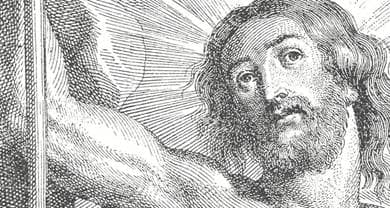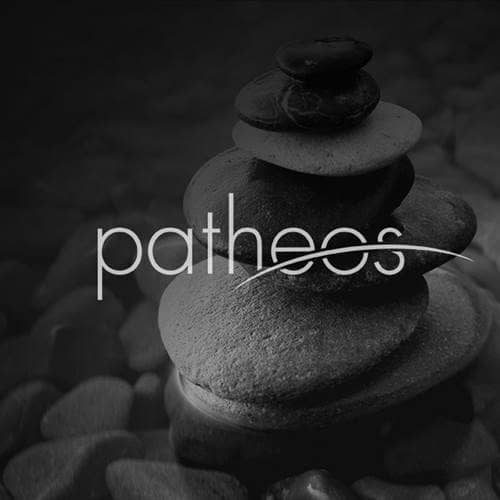- Trending:
- Pope Leo Xiv
- |
- Israel
- |
- Trump
- |
- Social Justice
- |
- Peace
- |
- Love

RELIGION LIBRARY
Anglican/Episcopalian
Sacred Time
Anglicanism, like Christianity generally, observes demarcations in history and in the ongoing flow of the worship life of the Church. In history, the life, death, resurrection, and ascension of Jesus Christ, taken together, are viewed as the midpoint of history. This is not a chronological midpoint, as if there will be the same number of years after Christ's ascension as before his birth, but an ontological midpoint, a fulcrum between two different essences of existence. Existence before Jesus (and of course after the fall) was in bondage to the power of sin and death. Since Jesus' earthly ministry, the power of sin is broken and death is destroyed. This reality is visible only to the faithful, but it is nonetheless real.
There are other important demarcations, one of the most important of which is the fall. Others include the giving of the law to Moses, and judgment day. The current age, the age between the ascension and judgment day, is known as the Church age. During the Church age, the worship life of the Church also has points of demarcation. Anglicans, like many other Christians, recognize Sabbaths, feasts, and seasons.
In most Christian denominations, since the time of the early Church, corporate worship takes place weekly, on the first day of the week (Sunday). This is known as the Lord's Day, in honor of the day on which Jesus was resurrected. Thus, from early on, Christianity shifted the day of holy observance from the Jewish practice of the last day of the week, the Jewish Sabbath, to the first day of the week. Many Christians, including some Anglicans, consider Sunday to be the Christian Sabbath, and accordingly treat the day in some fashion as a day of rest. Sabbatarianism, the belief that Sunday should be observed strictly as a day of rest, without the conduct of commerce or even organized recreation, was common in the Elizabethan and Jacobean Church. Although much less prevalent in Anglicanism today, sabbatarianism is still not uncommon in some, usually muted, form.
Anglicans, like many other Christians, arrange their worship according to set orders. At the micro level there are orders of worship for particular services, each called a liturgy. At the macro level there is an order of worship for a calendar year, called a liturgical year. The Anglican liturgical year is based on the ancient western liturgical calendar. This includes feast days commemorating biblical figures (such as St. Mark) and post-biblical figures (such as St. Augustine). The Anglican version also includes feasts for Protestant figures (such as Martin Luther) and Anglican figures (such as George Herbert). There are literally dozens of feast days throughout the year, although most of them go unnoticed by most Anglicans other than some Anglo-Catholics.
There are also more recognizable feasts and holy days in the liturgical calendar that celebrate events during the earthly life of Jesus Christ, or soon thereafter. These include the birth of Christ (Christmas Day), his baptism, his entry into Jerusalem on a donkey (Palm Sunday), his crucifixion (Good Friday), his resurrection (Easter), and the pouring out of the Holy Spirit on the apostles fifty days after his resurrection (Pentecost). Most of these more prominent celebrations occur on Sundays and have dates that vary with the date of Easter.
Finally, the liturgical calendar also sets forth different seasons of worship. The first season is Advent, a four-week penitential season just before Christmas in which both the Incarnation and the second coming of Christ (on judgment day) are anticipated. Advent is followed by the twelve-day Christmas season, then Epiphany, which celebrates the manifestation of Christ to the Gentiles as represented in the story of the three magi.
The season after Epiphany is Lent, a six-week penitential season. Lent commemorates Christ's forty days in the desert during which he fasted and resisted the temptations of the devil. Lent is followed by Holy Week, which is the week before Easter and includes Palm Sunday, Maundy Thursday (celebrating the Last Supper), Good Friday, and Holy Saturday. The Easter season extends from Easter Sunday through the Sunday of Pentecost. The season of (or after) Pentecost takes up the majority of the year, lasting until Advent.
Although Anglicanism is among the more devoutly liturgical traditions outside Roman Catholicism and Eastern Orthodoxy, not all Anglicans make equal use of the liturgical calendar; indeed, some Evangelical Anglicans virtually ignore it with the exceptions of Christmas and Easter. Many Anglicans, however, do follow the liturgical calendar, perhaps by changing the colors of vestments and paraments (decorative cloths on altars, pulpits, etc.) according to a traditional sequence (e.g., purple for Lent, white for Christmas and Easter), and by following the lectionary. The lectionary is a book of assigned readings from scripture, with particular texts to be read on particular days in a three-year cycle of Sundays and a two-year cycle of weekdays. The idea is that certain readings should be heard on certain feast days or holy days, such as the birth narrative on Christmas and the crucifixion narrative on Good Friday, or during certain seasons, such as judgment day narratives during Advent. The practice of associating readings with given days dates back to the 4th century.
Many Anglicans find that following the liturgical year provides a meaningful rhythm to worship life that is well suited to human capacities. They note, for example, the enhanced experiential depth that results when penitence precedes celebration, and celebration follows penitence. While many Protestant traditions have turned away from liturgical formality, both during the Reformation and in the last few decades, Anglicanism has sought to maintain and be nourished by its liturgical heritage.
Study Questions:
1. Should Anglican sacred time be viewed as cyclical or linear? Explain.
2. What is the Church Age?
3. Do Anglicans celebrate the Sabbath? Explain.
4. How do the liturgy and liturgical calendar mark time?
5. Describe the “seasons of worship” within the Anglican Church.










